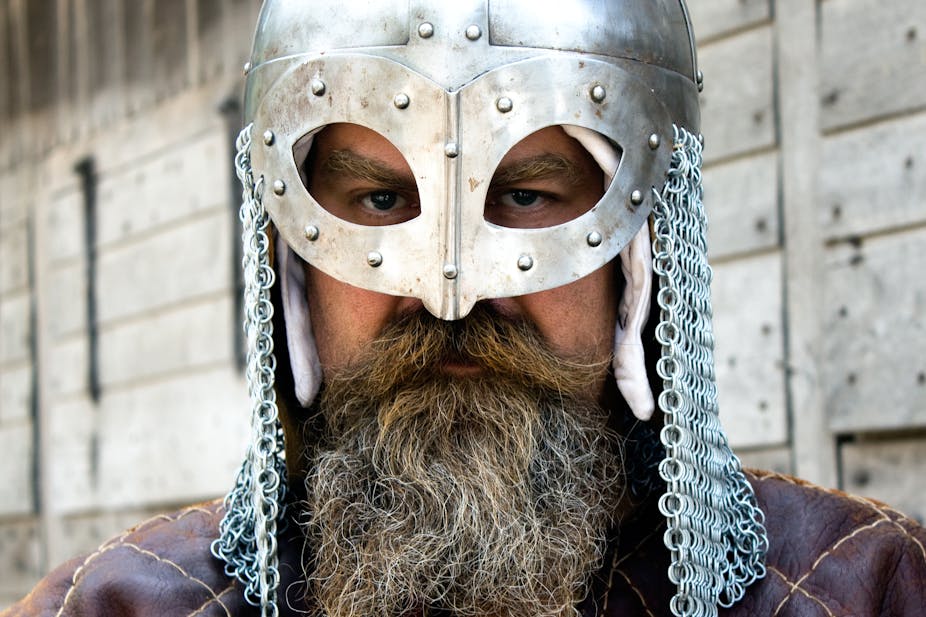In our lab we have a phone that rings several times a day. The conversation is always the same. A man from somewhere in the UK is desperate to know the answer to one question: “Am I a Viking?”
An answer we could give is: “No. You don’t have a boat or a sword. You’re not a Viking.” But what they really want to know is whether their DNA points to a Scandinavian ancestry.
Maybe they could find some food for thought in a paper published in the journal PLOS Biology, which recently caught the attention of the mainstream media due to its supposedly surprising conclusion that Europeans shared common ancestors in the past 1,000 years. But re-examining this claim when you know a little about population genetics, makes it a subtle and more interesting phenomenon, but also a much less surprising one.
First, it is important to define the word “ancestor”, and to think about how many you may expect to have. Our would-be Vikings are concentrating their hopes on the Y-chromosome, which is passed down from father to son largely unaltered, making it relatively simple to trace. But the Y-chromosome only represents one of the many ancestors in each generation.
Ancestry is most commonly thought of as both parents, both of their respective parents, and so-on. The number of these “genealogical ancestors” doubles in each generation as you go back in time.
You have two parents, four grandparents, eight great-grandparents and so on. Ten generations ago, you had more than 1,000 lines of descent, and 20 generations ago, more than a million. Increasingly some of these lead back to the same individuals multiple times, but the numbers are still very large.
For example, if there have been 40 generations over the past millennium, then any individual today would expect to have more than one billion lines of descent: many times the population of Europe (and the world) at that time. So yes, you can safely conclude that every European alive today is descended from every successfully reproducing European 1000 years ago, and of course countless non-Europeans too.
Computer models predict that, despite geographical boundaries, every individual in the world today is descended from every successfully reproducing individual in the world just a few thousand years ago, when humanity had already reached every corner of the world. Maybe the answer to our would-be Vikings should be, “Yes, we all are Vikings… and Romans, Huns and Slavs, and we are also all Africans, Asians and Native Americans.”
All this makes a headline saying that any two Europeans share a common ancestor just 1,000 years ago much less shocking, but these were not exactly the findings of the original article. The paper was looking for “genetic ancestors” - that minority of genealogical ancestors whose DNA has contributed to a modern individual’s genome. If every individual shuffles two copies of the genome they got from their two parents and passes a single newly-combined copy to each offspring, then the remaining is not passed on. Within a few generations whole genomes of some ancestors are lost altogether, and after 1,000 years the vast majority of genealogical ancestors leave no trace in the individual’s genome.
Genetic ancestors shared by two individuals are detectable by regions of matching DNA. With every generation there is a chance that each region will be split by the shuffling, so they inevitably get shorter over time. By finding the length of the longest region shared by the two individuals, one can estimate the time passed since the most recent shared genetic ancestor. This paper found that any two Europeans will have matching regions that suggest a common genetic ancestor in the last 1,000 years.
While this is interesting in itself, we should not infer too much. It is not evidence that we are the descendants of a single unified European population 1,000 years ago. Similarly, it is not evidence that there is no difference between the genetic make-up across modern Europe. Having ancestors in other parts of Europe (and the world) does not change the fact that most individuals have much more ancestry closer to home.
Such phenomena are also not specific to Europe. There is every reason to believe the same forces are at work on every continent, and between continents. In fact, the most recent genealogical ancestor shared by everyone alive today lived as recently as 4,000 years ago.
There are some interesting things to learn from this research, but maybe not the ones you got from the mainstream media. However, every article on this subject bashes new nails into the coffin of the outdated ideas of national and racial identity that are still ingrained in every culture, and I am always very happy to see people reminded that we are all family.

